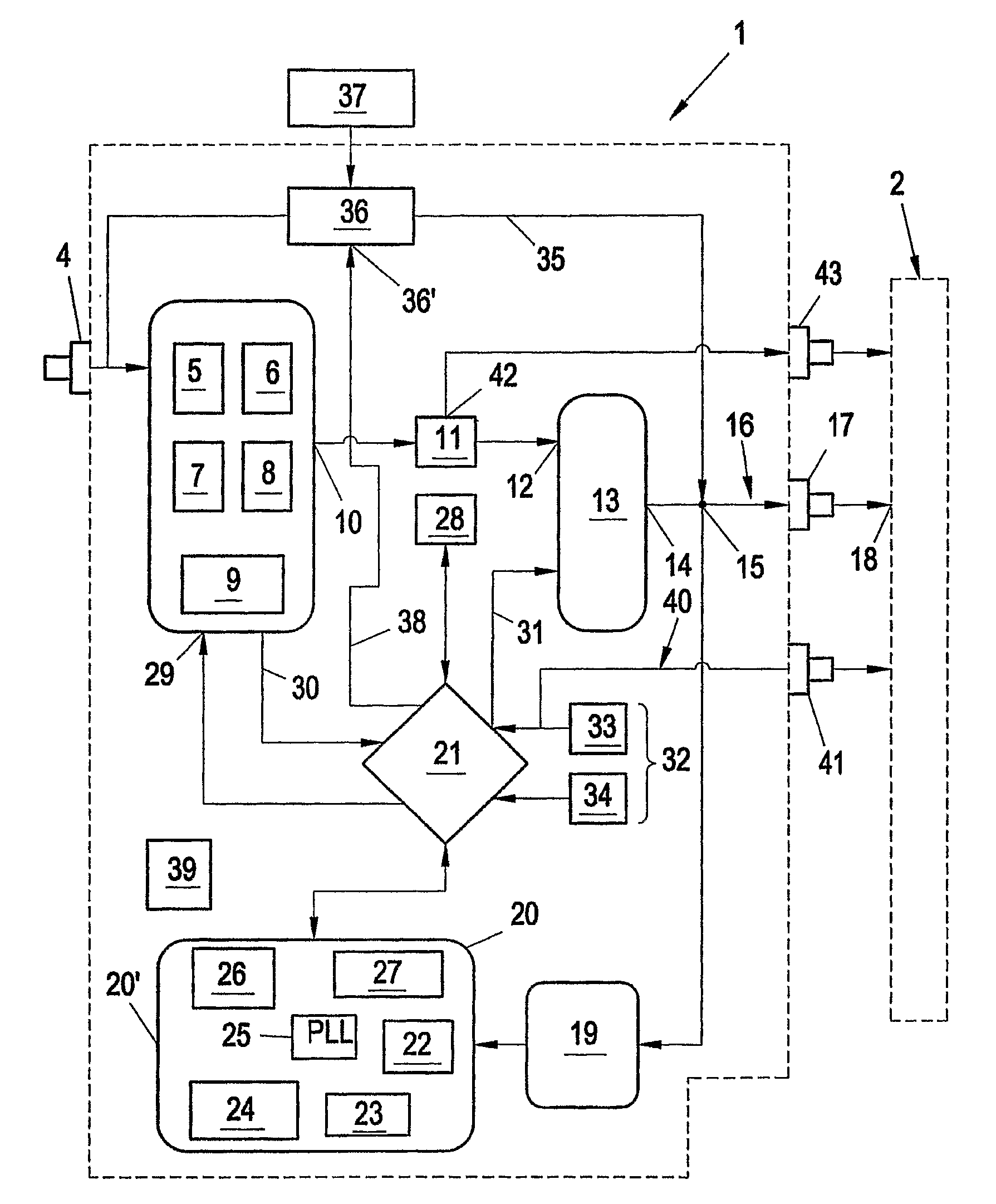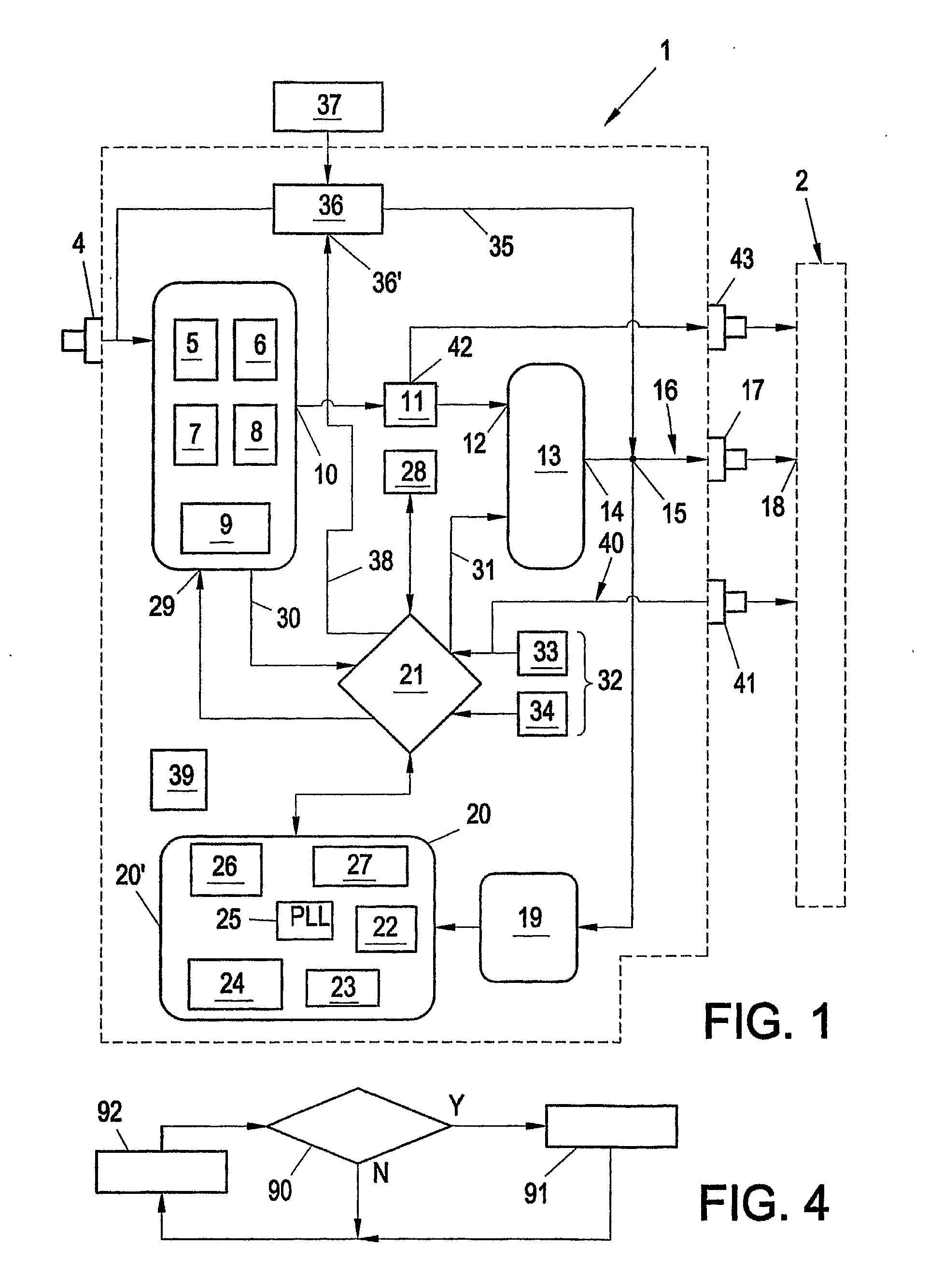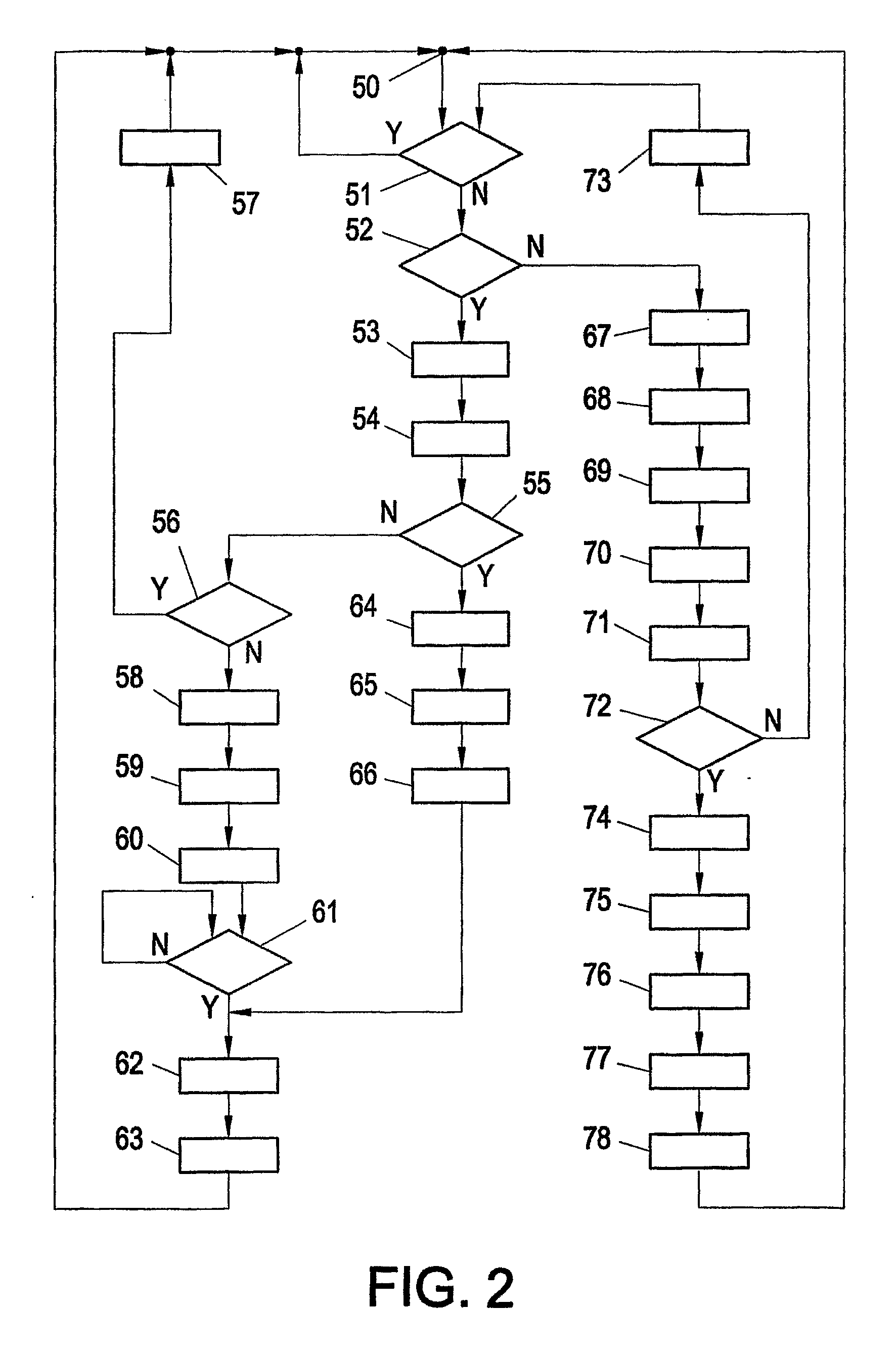Appliance for Converting Digital Audio Broadcast (Dab) Signals
- Summary
- Abstract
- Description
- Claims
- Application Information
AI Technical Summary
Benefits of technology
Problems solved by technology
Method used
Image
Examples
Embodiment Construction
[0025]FIG. 1 shows, schematically, an appliance 1 for converting DAB signals into FM signals and for transmitting these FM signals to an FM receiver 2. In accordance with FIG. 1, the appliance 1 is equipped with DAB reception means 3 that are conventional per se, and are connected to an antenna (not shown) via an antenna input jack 4. As usual per se, the DAB reception means 3 are equipped with an input stage 5 and with an FFT, demultiplexer and channel-decoder module 6 (FFT=Fast Fourier Transformation) and with a deinterleaver, FIC-decoder and PAD-decoder module 7 (FIC=Fast Information Channel, PAD=Program Associated Data) and with an audio decoder 8 and with a serial interface 9. At an output 10, the DAB reception means 3 contained in the appliance 1 emit a digital audio signal, which digital audio signal is supplied to a D / A converter 11 for the purpose of generating an analog audio signal. The appliance 1 is further equipped with FM modulator means 13, which FM modulator means 1...
PUM
 Login to View More
Login to View More Abstract
Description
Claims
Application Information
 Login to View More
Login to View More - R&D
- Intellectual Property
- Life Sciences
- Materials
- Tech Scout
- Unparalleled Data Quality
- Higher Quality Content
- 60% Fewer Hallucinations
Browse by: Latest US Patents, China's latest patents, Technical Efficacy Thesaurus, Application Domain, Technology Topic, Popular Technical Reports.
© 2025 PatSnap. All rights reserved.Legal|Privacy policy|Modern Slavery Act Transparency Statement|Sitemap|About US| Contact US: help@patsnap.com



